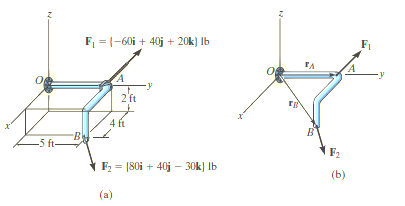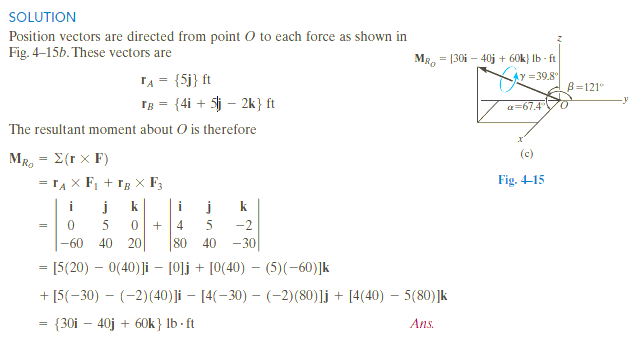Unit 1
Statistics
Q1. Find the magnitude of the two forces, such that if they act at right angles, their resultant is  10 N . But if they Act at 60°, their resultant is
10 N . But if they Act at 60°, their resultant is  13 N.
13 N.
Solution:
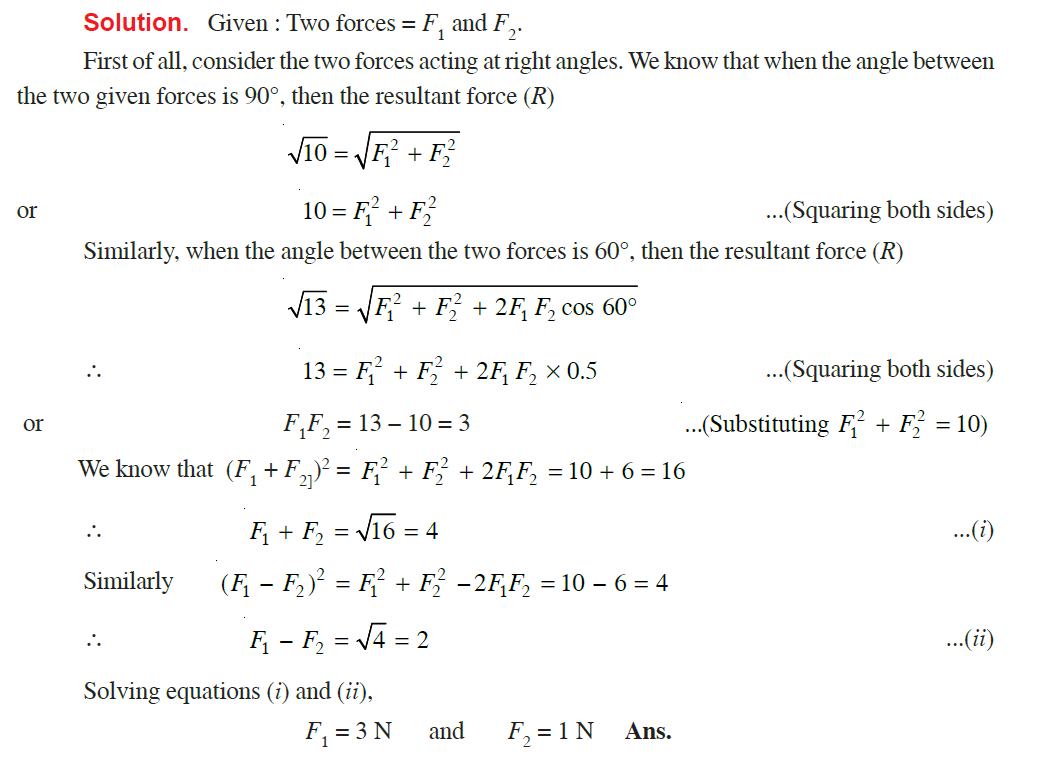
Q2. A triangle ABC has its side AB = 40 mm along positive x-axis and side BC = 30 mm along positive y-axis. Three forces of 40 N, 50 N and 30 N act along the sides AB, BC and CA respectively. Determine magnitude of the resultant of such a system of forces.
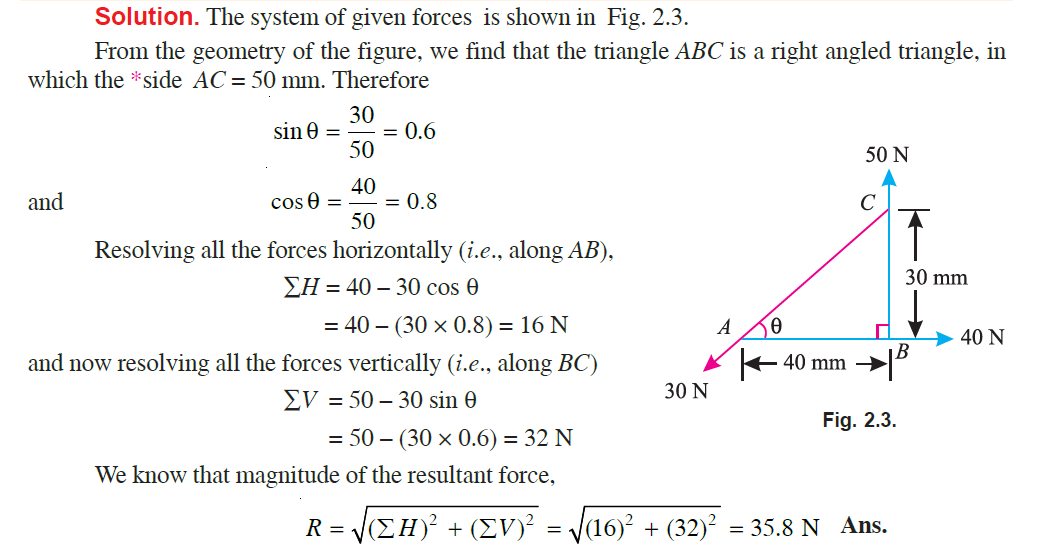
Q3. A system of forces are acting at the corners of a rectangular block as shown in Fig. Determine the magnitude and direction of the resultant force.
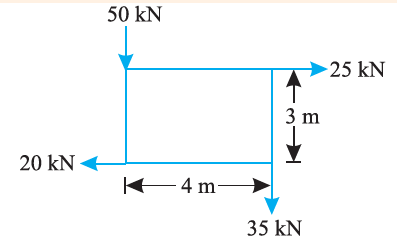
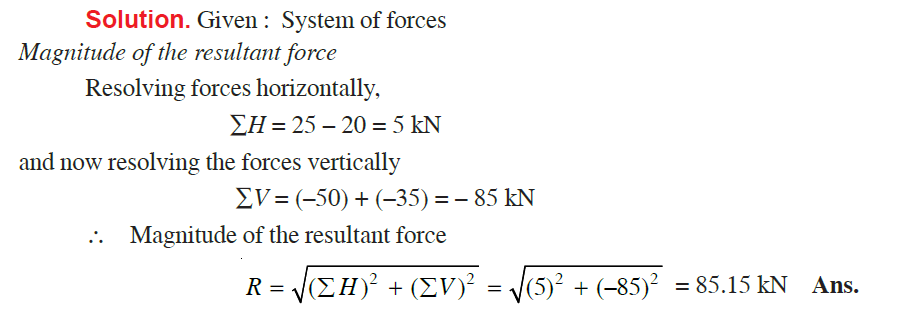
Q4. The following forces act at a point :
(i) 20 N inclined at 30° towards North of East,
(ii) 25 N towards North,
(iii) 30 N towards North West, and
(iv) 35 N inclined at 40° towards South of West.
Find the magnitude and direction of the resultant force.
Solution: The system of the forces described can be drawn as:
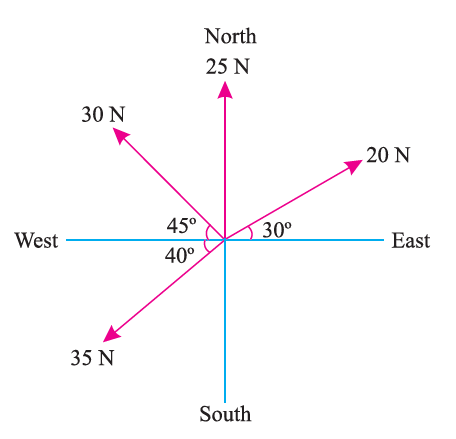
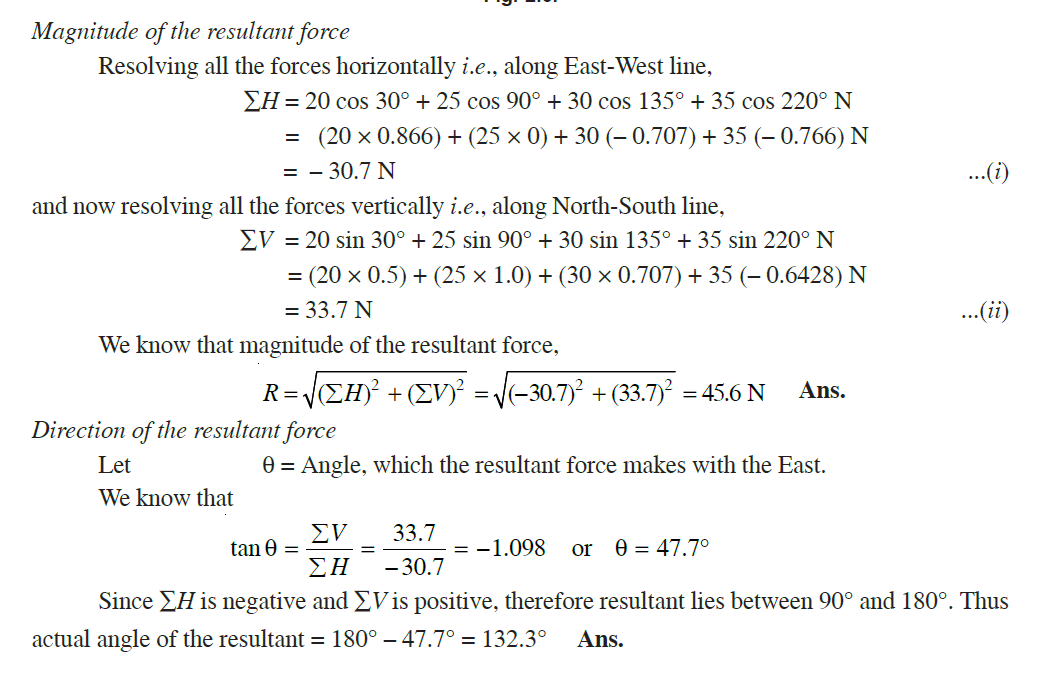
Q5. A horizontal line PQRS is 12 m long, where PQ = QR = RS = 4 m. Forces of 1000 N, 1500 N, 1000 N and 500 N act at P, Q, R and S respectively with downward direction. The lines of action of these forces make angles of 90°, 60°, 45° and 30° respectively with PS. Find the magnitude, direction and position of the resultant force.


Q6. A uniform plank ABC of weight 30 N and 2 m long is supported at one end A and at a point B 1.4 m from A as shown in Fig. below. Find the maximum weight W, that can be placed at C, so that the plank does not topple.


Q7. Three forces of 2P, 3P and 4P act along the three sides of an equilateral triangle of side 100 mm taken in order. Find the magnitude and position of the resultant force.
Solution:
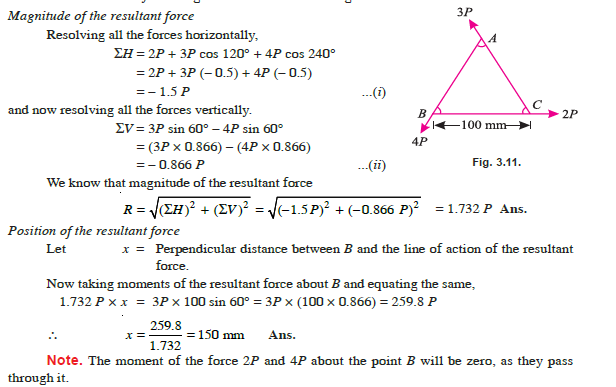
Q8. A square ABCD has forces acting along its sides as shown in Fig. below. Find the values of P and Q, if the system reduces to a couple. Also find magnitude of the couple, if the side of the square is 1 m.
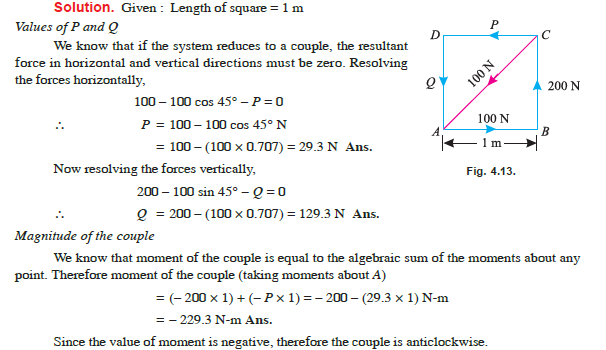
Q9. Determine the moment produced by the force F in Fig. shown about point O. Express the result as a Cartesian vector.
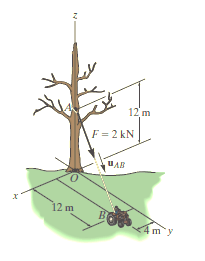
Solution : As shown in Fig., either rA or rB can be used to determine the moment about point O. These position vectors are
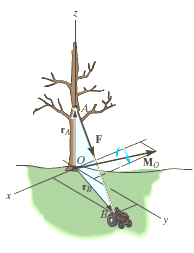
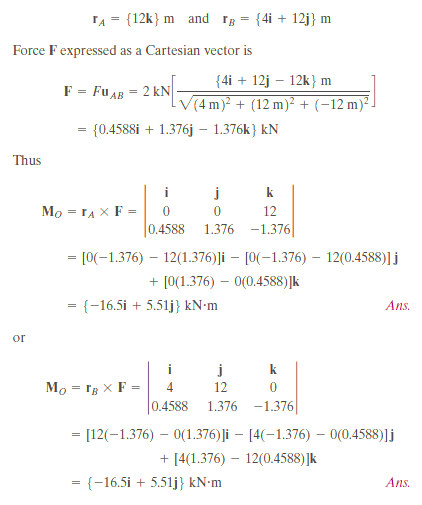
Q10. Two forces act on the rod shown in Fig. below. Determine the resultant moment they create about the flange at O. Express the result as a Cartesian vector.
